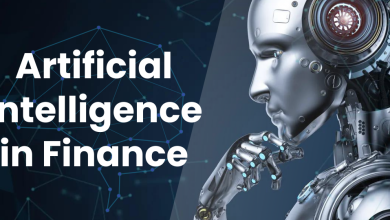
Most organisations approach AI with a focus on data pipelines, model performance, and governance frameworks. But one of the biggest reasons AI fails to scale, or deliver measurable value, is far less technical: a fragmented, underdeveloped digital employee experience (DEX).
Gartner research reveals that over half (53%) of digital workplaces are still upgrading basic infrastructure. When AI is layered onto these immature environments, it increases friction, frustrates users, and ultimately undermines business outcomes. In short: the context into which AI is deployed matters as much as the AI itself.
Even the most powerful algorithms can’t succeed in digital environments riddled with bottlenecks, disjointed tools, and UX friction. And yet, DEX is still largely absent from most AI-readiness strategies.
The context crisis
Imagine if an organisation introduces an AI-powered assistant to help its customer service team to solve problems quicker. AI provides helpful responses and knowledge, but the team struggles because their systems are slow, they use disconnected applications, and can’t access real-time customer data.
The AI ends up being just another tool in a disjointed workflow, adding complexity instead of simplifying it. This is the context crisis – AI tools functioning separately from the digital reality employees face each day.
According to Gartner’s Digital Workplace Maturity Assessment, organisations at higher levels (4 and 5) see much better results from their technology investments. These mature workplaces go beyond simply rolling out tools — they build well-connected systems that support collaboration, monitor performance in real time, and help IT resolve issues before they escalate. That user-centred design is key: when digital experiences are smooth, employees are more productive, engaged, and open to adopting new technologies like AI. But in fragmented environments, AI only adds to the complexity and frustration, making things worse instead of better.
Friction vs. intelligence
The true value of AI isn’t just its intelligence; it’s how it reduces daily work friction. Problems like too many apps, slow devices, and workflow bottlenecks can hinder even the most advanced AI. Good user experience (UX) lowers cognitive load, minimises switching between tasks, and removes other obstacles.
When AI tools are used without tackling these fundamental UX issues, they often increase cognitive load instead of decreasing it. Employees find themselves managing yet another interface, learning new processes, and dealing with gaps between AI tools and existing applications.
Organisations that see a real return on AI investments have built a “digital foundation.” This foundation is made up of technologies that help them create and manage digital solutions. It empowers teams and ensures that AI improves work rather than complicating it.
Five actions for AI-ready digital employee experience
Based on insights from Gartner’s research and digital workplace maturity assessments, here are five crucial steps organisations should take to ensure their DEX foundation supports successful AI adoption:
1. Establish real-time telemetry as a foundation for AI readiness: before launching AI tools, implement a robust digital employee experience management system that offers real-time insight into how employees actually work and engage with digital tools. This telemetry data helps DEX platforms optimise workflows, reduce digital friction, and align AI tools with real employee needs to support a productive digital environment.
Monitor application performance, network connectivity, device condition, and workflow patterns for various employee roles. This data assists AI systems in providing more relevant and contextual help while enabling IT teams to identify friction points that could hinder AI effectiveness.
2. Map and optimise employee journeys before adding AI: use journey mapping to evaluate sentiment and obstacles for key tasks performed frequently by different employee roles. Personas and journey mapping are effective tools for analysing and improving DEX through the technologies employees rely on for their work.
Avoid adding AI to broken processes. Instead, use DEX insights to simplify workflows, minimise unnecessary context switching, and lower cognitive load. Then, introduce AI as an enhancement to these optimised experiences, not as a temporary fix for poorly designed ones.
3. Build proactive support capabilities that scale: transform IT support from reactive to proactive by leveraging DEX data to predict and prevent issues before they affect productivity. This is particularly important when rolling out AI tools, which often uncover new technical and workflow challenges.
Create automated support workflows that can resolve common issues without human help, and ensure your support team has real-time insight into the digital context surrounding any AI-related problems. This method helps IT solve issues more quickly by reducing manual troubleshooting and surfacing root causes in real time, while giving AI systems the contextual data they need to learn from user behaviour and adapt to real-world workflows.
4. Measure success through experience-level agreements (XLAs): Shift from traditional Service Level Agreements (SLAs) to Experience-Level Agreements (XLAs) that focus on employee outcomes rather than just system uptime. For AI projects, this means measuring metrics such as:
– Time saved on routine tasks
– Reduction in context switching
– Improvement in work effectiveness scores
– Decrease in support tickets related to workflow confusion
– Employee satisfaction with AI-supported processes
XLAs help ensure that AI investments genuinely enhance the employee experience rather than merely meeting technical performance standards.
5. Implement AI governance through usage analytics: Track AI and generative AI use at the endpoint level to avoid unauthorised adoption and optimise your AI spending. Use DEX monitoring to learn which AI tools employees actually use, how they integrate them into their workflows, and where there are gaps between approved and actual usage.
This endpoint-level visibility helps IT manage and support AI tools correctly while preventing uncontrolled AI implementations that could pose security risks or create workflow inefficiencies.
DEX as an AI system of record
Organisations that succeed with AI aren’t necessarily those with the most advanced models or the largest AI budgets. They are the ones who see DEX as the crucial record that determines whether AI initiatives create value or chaos.
This requires a fundamental change in how we consider AI readiness. Rather than focusing solely on data quality, model selection, and governance frameworks – important as those are – we need to prioritise the digital workplace foundation that ultimately influences whether employees can effectively adopt and benefit from AI capabilities.
Findings on digital workplace maturity levels offer a clear guide. The most advanced organisations build a digital foundation that empowers their teams to innovate. They see their digital workplace as key to business goals, and this foundation is what allows AI to deliver transformative value, not just small improvements.
The message for CIOs and IT leaders is clear: before deploying AI, assess your current digital employee experience. Invest in reducing friction and building a unified digital foundation that will enable AI to genuinely enhance your employees’ work instead of making it more complicated.




